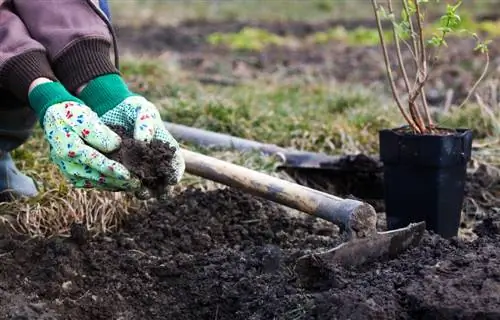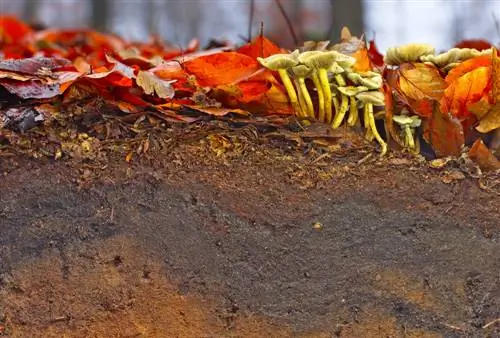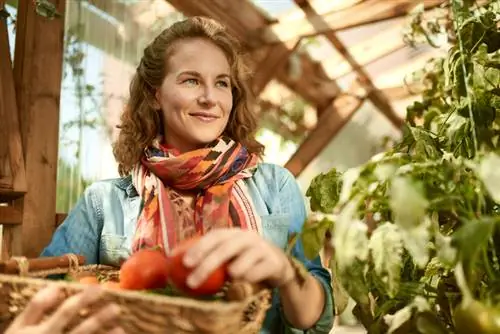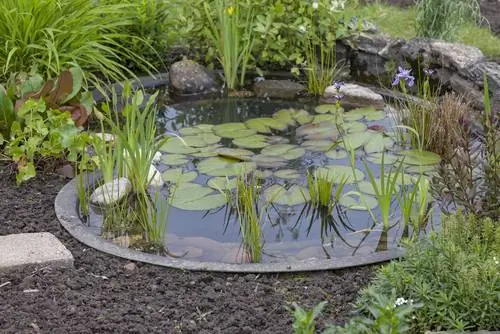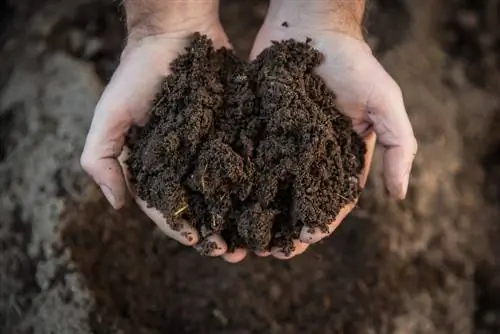- Author admin [email protected].
- Public 2023-12-16 16:46.
- Last modified 2025-01-23 11:21.
The different types of compost are suitable for different purposes. Fresh compost and mature compost differ in their composition, so they can be used either as fertilizer or as a soil improver.

How to properly use compost in the garden?
To use compost correctly, use fresh compost for creating new beds and soil improvement, mature compost as fertilizer for kitchen and ornamental gardens as well as woody plants and potted plants. The amount required varies depending on the type of plant and soil conditions (2-50 liters per square meter).
Compost is suitable for:
- New beds and soil improvement
- Useful and ornamental gardens
- Woods and potted plants
New beds and soil improvement
Fresh compost that is not yet fully ripe is suitable for creating new beds and improving the soil. It is spread over the bed in autumn and covered with a layer of leaves. The foliage protects the substrate from the cold and has an insulating effect, allowing soil organisms to work in winter.
If your soil is particularly heavy or sandy, you should spread up to 50 liters of fresh compost per square meter. You can maintain soil fertility with 20 liters per square meter approximately every two years. Since the fresh compost is full of micro and macro organisms, you must not bury it into the soil. Living things need oxygen for their metabolism.
Useful and ornamental gardens
Mature compost is an ideal fertilizer for useful and ornamental plants. Add the compost to the bed in spring and lightly hook it into the soil.
Highly depleting vegetables such as potatoes, pumpkin, rhubarb or tomatoes require up to five liters of compost per square meter. Four liters per square meter is sufficient for moderate nutrient consumers. This group includes cucumbers, Chinese cabbage, kale, chard, mora, radish, spinach and salsify. Those with low consumption are grateful for the two liters per square meter. Crops with low nutrient requirements include beans, endives, onions, radishes or peas.
Ornamental plants in the flowerbed have lower nutrient requirements. Three liters are enough for one square meter. For ericaceous plants, you should use the compost more sparingly. For lawn care, a quantity of two liters is sufficient for the same area.
Woods and potted plants
Ornamental trees, berry bushes and fruit trees need fertilization of three liters per square meter. Apply the mature compost in autumn or spring and work it in lightly. Blueberries and conifers require fewer nutrients.
Plants in balcony boxes and flower pots are grateful for a mixture of potting soil and ripening compost. A ratio of 30 percent compost and 70 percent potting soil provides the plants with ideal growing conditions.

